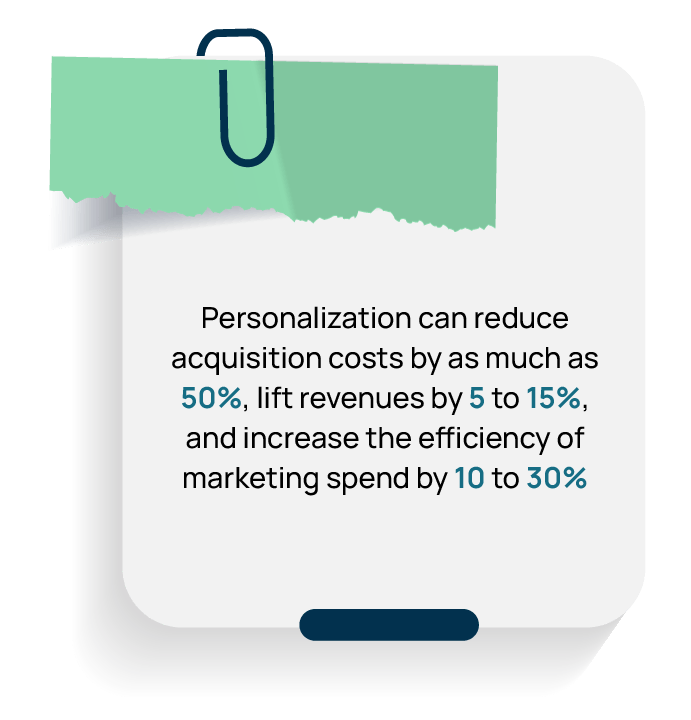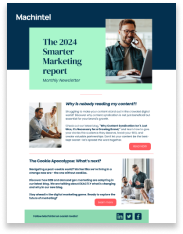Enhancing Marketing Dynamics through Headless CMS Personalization
Explore this article to see how headless CMS personalization not only surpasses the limitations of traditional CMS but also significantly contributes to crafting more effective marketing strategies.
Introduction to Headless CMS
In digital marketing, the integration of headless CMS personalization has revolutionized the approach to crafting tailored marketing strategies. This architecture supports a content-first approach, enabling integration with front-end applications via APIs. Additionally, it facilitates personalized marketing by allowing for dynamic content delivery based on user preferences and behaviors.
A key benefit of adopting headless CMS is its ability to use real-time data to offer highly relevant content and recommendations, enhancing user engagement, conversion rates, and loyalty. Moreover, its compatibility with other marketing tools like Customer Data Platforms and analytics software enhances its potential to deliver personalized content at scale.
As digital platforms evolve, the agility and scalability of headless CMS make it an indispensable tool for marketers seeking to provide personalized, consistent experiences across all digital touchpoints, including web, mobile, and IoT devices.
Headless CMS vs Traditional CMS
A content management system (CMS) is a software application designed to facilitate the creation, management, editing, storage, and publication of digital content on websites. It allows users to develop websites and launch products without the need for coding.
Headless CMS, distinguished by its separation of the front-end presentation from the back-end management via APIs, offers developers unparalleled flexibility in using their chosen technologies for content display. Unlike traditional CMSs that link front and back ends, headless CMSs are front-end agnostic, enhancing webpage speed and SEO by allowing quicker content loading without back-end delays. This architectural advantage will be increasingly recognized in 2024 for its impact on digital efficiency and performance.
Why Opt for a Headless CMS? An In-depth Comparison
While both traditional and headless CMSs offer unique advantages, this analysis aims to distinguish between them and highlight the specific benefits of headless CMS in marketing strategies.
- Omnichannel Delivery
Headless CMSs offer unlimited content delivery channels (e.g., web, mobile, AR/VR) without restrictions, unlike traditional CMSs, which are limited to specific channels.
- Scalability and Reliability
Headless CMSs, leveraging cloud storage for content, adeptly manage traffic surges and sustain frontend service even when backend problems arise, overcoming a significant hurdle faced by traditional CMSs where the frontend and backend are interlinked.
- Improved Security
With a smaller attack surface due to API-only access, headless CMSs are less prone to security breaches compared to traditional CMSs, which face risks from database vulnerabilities and outdated plugins.
- Faster Time-to-Market
API-driven headless CMSs facilitate quicker content integration and distribution across multiple platforms, reducing the time-to-market compared to traditional CMSs requiring content reauthoring for new channels.
- Automatic Updates
Headless CMS vendors handle system updates, freeing users from the maintenance burdens associated with traditional CMSs, where manual updates can risk compatibility and stability.
- Enhanced Performance
Headless CMSs enable the use of modern web technologies for faster website performance, in contrast to traditional CMSs, where added plugins can slow down site speed.
Leveraging CaaS for Enhanced Personalization in Marketing

[Source: Growth Collective]
Content as a Service (CaaS) represents a significant evolution in how content is managed, emphasizing a model that enables the storage of content in a clean, structured format for on-demand distribution across multiple digital platforms via application programming interfaces (APIs).
Unlike traditional CMS that blends content with its presentation, CaaS uniquely decouples content from design, promoting efficient content delivery across various platforms and devices. This approach underpins the concept of headless CMS architecture, providing marketers with the agility to publish content broadly, from websites and mobile apps to IoT devices, without the need to recreate content for different outlets.

[Source: Future Market Insights]
Adopting CaaS brings several benefits, including the ability to deliver content through multiple channels, ensuring a uniform and tailored customer experience everywhere. It allows for more personalized and context-aware content distribution, meeting specific user needs, preferences, and consumption mediums.
The cloud-based, API-first nature of CaaS facilitates easier adaptation to new channels and technologies, offering scalable and future-proof digital experiences. Moreover, it supports operational efficiency and cost savings by allowing content to be reused across various platforms, reducing the time-to-market for marketing initiatives and updates.
As digital environments continue to advance, the demand for strategic and versatile content capable of spanning various channels is growing. This need is driving growth in the CaaS market as companies seek a centralized content hub that aids in content modeling, planning, collaboration, and lifecycle management. Developers also benefit from the flexibility to design front-end experiences that make innovative use of content, further accelerating the growth of CaaS.
Privacy in Personalized Marketing
Imagine scrolling through a social media feed and coming across an ad that seems tailor-made for the viewer! It's promoting a product that has been on the consideration list, and the ad even includes the viewer's name in the text.
The precision of targeting and personalization is impressive, yet it raises questions about the extent of information collection and usage for marketing purposes.
Personalized marketing is applied across various channels, such as social media, email, websites, and mobile apps, utilizing diverse types of data, including demographic details, browsing and purchase histories, and social media interactions.
The objective of personalized marketing is to elevate the consumer experience by delivering tailored and relevant content, thereby enhancing marketing efficiency for businesses. However, the utilization of data raises privacy concerns in marketing, sparking debates about the ethical treatment of personal information. Hence, achieving an optimal balance between personalization and addressing privacy concerns becomes a critical challenge for marketers and businesses alike.
Consumer Privacy Tactics in Personalized Marketing
Understanding privacy rights and safeguarding personal information is crucial for consumers in the era of personalized marketing. Below are some of the strategies for maintaining privacy in this context:
- Review privacy policies to understand data collection and usage.
- Adjust privacy settings to limit data collection and usage.
- Share personal data cautiously, only with trusted sources.
- Opt-out of personalized marketing to reduce data use for marketing.
- Implement strong passwords and two-factor authentication for account security.
- Employ ad blockers to prevent ad tracking and third-party data collection.
- Stay alert to phishing scams to protect personal information from theft.
Selecting the Ideal Headless CMS for Brand Personalization
In the age of personalized marketing, having a guide to selecting the best headless CMS for your brand is crucial. It empowers businesses across various sectors to utilize the right headless CMS, enabling them to create and deliver content that directly engages their audience, thus enhancing overall engagement. Here's a streamlined guide for different business types aimed at boosting brand personalization:
- Tech Startups
Startups should seek minimalist headless CMS options that allow for easy integration and customization, supporting the rapid development of personalized customer experiences without the need for complex marketing functionalities.
- Small Businesses
For entities far from technical intricacies, a headless CMS loaded with user-friendly features is essential. This enables the delivery of highly personalized content without engaging with code, supporting scalability and personalization efforts seamlessly.
- Nonprofit Organizations
Nonprofits require a headless CMS that offers both marketer-friendly interfaces and the agility to personalize content for diverse audiences. Tailored packages from CMS providers can ensure cost-effective personalization capabilities.
- Manufacturing Companies
Manufacturers need a CMS that facilitates deep integration with various business tools, allowing for personalized content creation that resonates with their specific audience by leveraging business intelligence and automation.
- Direct-to-Consumer Brands
Emerging D2C brands focusing on cutting through the competitive market should prioritize platforms that offer robust product information management (PIM) and digital asset management (DAM). This foundation supports the creation of personalized customer experiences across all channels.
- Medium-sized Businesses
Positioned uniquely, medium-sized businesses must identify the features that will enable them to tailor their content now and in the future. A scalable, flexible SaaS headless CMS solution can evolve alongside businesses, guaranteeing tailored customer experiences enabled by headless CMS personalization without substantial financial commitments.
Enhancing Multi-channel Personalization with Headless CMS

[Source: Zipdo]
Ensuring personalized content dissemination through multi-channel marketing, encompassing platforms such as social media and email marketing, is imperative for fostering meaningful customer engagement. In this context, leveraging content management technologies, such as a headless CMS, becomes essential.
By decoupling content management from the presentation layer, these technologies enable enterprises to deliver consistent, personalized content across all digital platforms. This approach eliminates the constraints associated with traditional CMS frameworks. By employing API-driven content strategies, a headless CMS enables the smooth dissemination of content across multiple channels, guaranteeing a cohesive and tailored user experience.
Utilizing headless CMS personalization guarantees consistent delivery of tailored content across all channels, thereby maintaining brand integrity and enhancing customer recognition. It simplifies the processes of content creation, storage, and dissemination by centralizing content management, which diminishes repetitive tasks and safeguards content uniformity across platforms.

[Source: Zipdo]
Providing personalized experiences across different channels enables businesses to amplify customer engagement and conversion metrics. Furthermore, a headless CMS offers scalability and adaptability, allowing businesses to integrate new channels without substantial modifications to the content infrastructure.
- Future Prospects

[Source: McKinsey]
The year ahead heralds a significant transformation in digital marketing, fueled by the convergence of AI-driven technologies and the adoption of the MACH architecture. This change is characterized by enhanced integration across headless CMS, commerce, marketing tools, and cloud hosting, forging a unified and flexible digital marketing ecosystem.
The adoption of generative AI tools like ChatGPT is redefining content creation, enabling rapid production of high-quality content across text, images, and videos. Beyond content generation, AI automates and optimizes various marketing processes, from personalization to security, enhancing efficiency and freeing marketers to focus on strategic initiatives.
The move toward a more interconnected digital infrastructure emphasizes the concept of composability, where API-first technologies are combined to create a modular and adaptable toolkit. This approach streamlines operations and fosters innovation, allowing marketers to leverage best-of-breed tools for a competitive edge.
As the digital sphere becomes more integrated, the capacity for delivering personalized, secure, and impactful digital experiences is significantly amplified. This transformative phase in digital marketing leverages technology to maximize resources, setting new benchmarks for engagement and effectiveness in the industry.

By submitting this form I have read and acknowledged the Terms of Use and the Privacy policy
